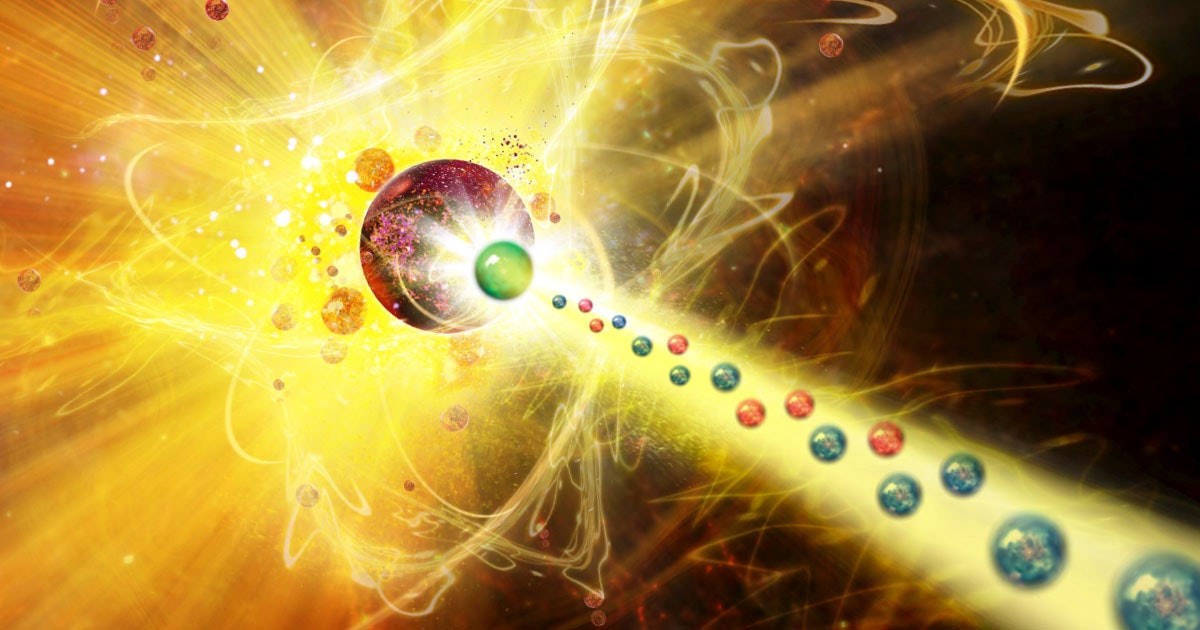Mysterious forces are at play 100 meters into the ground in Switzerland. Researchers at the European research organization Cern simply do not get the results to agree with our basic physical theories.
In its 27-kilometer-long accelerator LHC, the researchers have for 14 years had particles collide and studied the energy-rich products that arise as a result of the collisions. The experiments have confirmed everything we know about what the universe is made of and which forces of nature control it. The last five years have, however Results in one of the detectors, LHCb, made the physicists put their foreheads in deep folds.
The detector performs measurements on a certain exotic particle, which does not behave as it should when it decomposes into less energy-rich particles. There must therefore be unknown forces that affect the process, perhaps a new force of nature that we can add to the four we already know.
A new force of nature would not only be the discovery of the century. It would also give us new opportunities to explore the deepest mysteries of the universe. Maybe it will show why there is matter in the universe, what it is that holds the galaxies together and exposes hidden dimensions in space.
—
A thousand physicists follow the development
The collisions in the LHCb detector are closely monitored by researchers all over the world. About a thousand physicists sit at their respective computers and analyze the large amounts of data from the experiments, well aware that they may be writing a history of science.
—
If it turns out that an unknown force of nature is at play, it will challenge the physicists’ so-called standard model, which includes everything we know about matter and the forces in the universe.
Today, the model contains four natural forces: gravity, electromagnetic interaction and weak and strong interaction.
—
The four forces of nature are very different, in both range and strength. Gravitation is the natural force that most of us are most familiar with in everyday life, but it is very much weaker than the other forces.
Compared to the second weakest force, weak interaction, gravity is about one quintillion (a one sequence of 30 zeros) times weaker. This means that while the other three forces have a great influence on how the particles inside the atoms affect each other, the effect of gravity is so small that it cannot be measured.
However, gravity acts over very large distances. While the nuclear forces only act at the atomic level, the range of gravity and the electromagnetic interaction is basically infinite.
—
If there is a fifth unknown natural force, we do not know how long its range is, but experiments with LHCb indicate that it at least affects the particles of atomic nuclei.
Unstable particles break the law
The standard model divides all particles into two different types: force particles, which carry the forces of nature, and matter particles, which make up all matter in the universe. The latter include electrons and quarks, the building blocks of atomic nuclei. Quarks are available in several varieties. Protons and neutrons consist of the lightest types, so-called up and down quarks.
The standard model also contains four heavier quarks with the designations “apart”, “charm”, “bottom” and “top”. Like the up and down quarks, they can come together to form larger particles, so-called hadrons.
When that happens, however, they are very unstable. A hadron that contains, for example, a bottom quark therefore decomposes quickly into a lighter type of hadron. In the process, the bottom quark is transformed into the lighter special quark and when this happens, an electron, a so-called muon, the electron’s heavier cousin is emitted at the same time.
It is precisely these by-products of decay that LHCb measures.
—
According to the standard model, there should be so-called universality between the two types of decay. This means that the probability of an electron being emitted is exactly the same as the probability of emitting a muon.
Therefore, the detector should detect as many electrons as muons from the decay. However, this is not the case. After more than five years of experiments, during which physicists have measured hundreds of billions of decays, there is still an imbalance.
Out of 100 measured decays, 54 result in an electron as a by-product, while only 46 result in a muon. It is a hard blow for the standard model, which in thousands of other experiments has been tested to unprecedented precision. If the universality of the standard model does not hold, there must be new underlying physical phenomena.
—
Physicists must be completely sure
When physicists challenge a well-proven theory as the standard model, they must of course be completely sure of their case. Despite the large amounts of data, this may in fact be a statistical coincidence.
Therefore, researchers at LHCb are extremely cautious and spend a lot of time calculating the probability that the results are not just due to chance.
In this context, they use a special scale where the probability of random deviations is described with the Greek letter sigma. A sigma means that there is about a 16 percent probability that the observations are due to coincidences.
Physicists demand five sigma before they dare to state that this is a new discovery. This means that the probability of chance must be reduced to 3.5 million.
—
With the latest results from LHCb, physicists have reached just over three sigma, which corresponds to a probability of 0.1 percent that the measured imbalance between electrons and muons is due to chance. In other words, the result is 99.9 percent reliable.
If the measurements in the coming years continue to show the same imbalance and the researchers reach their goal of five sigma, theoretical physicists will stand in line with different bids for an explanation.
Most theories suggest a new type of natural force in the style of the four known. If it is to follow the logic of the standard model, it acts through a force-bearing particle in the same way as the other forces are carried by photons, gluons or W- and Z-particles.
The hope is that the new force of nature will lead physicists to solutions to the universe’s greatest mysteries.
—
If the force-bearing particle behind the new natural force has a mass like the W and Z particles, it could solve one of astrophysics’ biggest problems: the so-called dark matter of the universe.
Visible matter makes up only one-fifth of the mass of the universe. The rest consists of matter that we can not see. The only reason we know it is there is because we can observe the effects of its gravity.
A new force of nature can act as an intermediary between the particles in the dark matter and the particles we know from the standard model. This means that physicists may be able to produce dark matter in the laboratory with the help of the new force of nature.
Another very interesting thing about this is that the unknown force may be able to open the doors to the invisible dimensions that according to some physicists exist in the universe. Then we can possibly get an answer to how it comes about that gravity is so weak. Maybe it simply disappears into the unknown dimensions?
—
Japan and the United States take over
Researchers at the LHCb are today at the forefront of the search for the unknown force of nature. However, they risk being overtaken in the next few years, as Cern’s accelerator needs to be upgraded and thus will be left unused for a while.
In the Belle II experiment in Japan, physicists have also begun to measure the decay of hadrons with bottom quarks. They are of course excited to see if they will register the same imbalance that LHCb researchers have found.
In the accelerator at Fermilab in the USA, physicists have also been exposed to an unknown force of nature, but in a different way.
The American experiment studies muons, which act as small magnetic spins. When the muons are exposed to a magnetic field, the axis of rotation changes, but the change has been shown to be 0.1 percent larger than the theory predicts. According to the researchers, the deviation may be due to the unknown force of nature.
—
Which group of physicists will first reach the goal of five sigma will become apparent in the coming decade. In 2028, the upgrades at Cern will be completed and then the European researchers can sprint past.
By then, they will be able to collect results at least ten times faster than before. Then they will sit with the best tool in the search for the final proof of the unknown force of nature.
—


